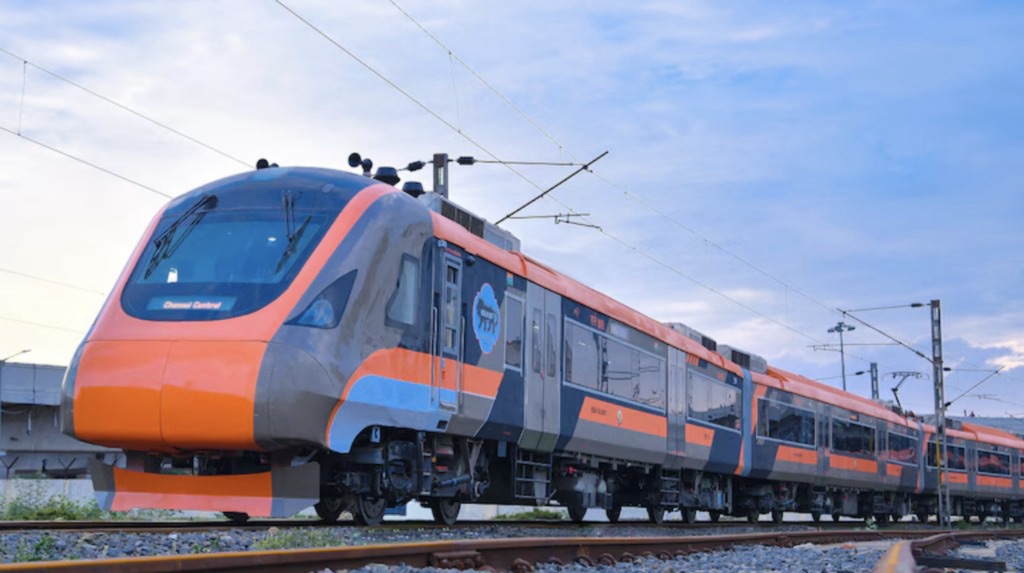Bihar to Get Amrit Bharat Express and Namo Bharat Rapid Rail Services
Bihar Becomes the Confluence of Vande Bharat, Namo Bharat, and Amrit Bharat Trains
Prime Minister Narendra Modi has described the Vande Bharat, Amrit Bharat, and Namo Bharat Rapid Rail as the modern trinity of Indian Railways. Two new trains from this trinity are set to operate from Bihar. While several Vande Bharat Express trains already run in the state, one Amrit Bharat Express currently operates between Darbhanga and Anand Vihar Terminal via Ayodhya.
Recently, several new railway projects have been approved for Bihar. With sufficient funding, construction work on older projects has also picked up speed, enabling faster completion. PM Modi is set to inaugurate three such railway projects in Bihar. The launch of new trains and newly built railway lines is expected to significantly enhance the state’s rail infrastructure.
The new railway lines include Supaul–Pipra, Khagaria–Alauli, and Hasanpur–Bithan. Two new passenger train services will also start on these routes. However, the most excitement among Biharis surrounds the launch of the Namo Bharat Rapid Rail and the Amrit Bharat Express connecting Saharsa to Lokmanya Tilak Terminus.
Namo Bharat Rapid Rail: A New Chapter in Intercity Travel
The Namo Bharat Rapid Rail, along with the Vande Bharat Express, has become a symbol of India’s modern rail identity. Designed to provide world-class services between short-distance cities, this rapid rail service has revolutionized intercity travel. The first Namo Bharat Rapid Rail operated between Ahmedabad and Bhuj in Gujarat. Now, the second service has been announced between Jaynagar and Patna. Unlike the first train which had 12 air-conditioned coaches, the Jaynagar–Patna train will have 16 coaches, accommodating over 2,000 passengers at once.
Built under the “Make in India” initiative, this train features advanced safety and passenger amenities. It is equipped with the Kavach safety system, CCTV cameras, fire detection systems, and emergency talkback units in every coach. Both ends of the train have loco pilot cabins, eliminating the need for engine reversal.
The ergonomically designed seats offer international-level comfort, and each coach includes Type-A and Type-C charging sockets. Toilets are modern vacuum-based, with dedicated facilities for differently-abled passengers. Other features include automatic doors, dust-proof gangways, semi-permanent couplers, and digital route map indicators in each coach, similar to metro trains.
Amrit Bharat Express: Connecting Saharsa to Lokmanya Tilak Terminus
The Amrit Bharat Express connecting Saharsa to Lokmanya Tilak Terminus will be the third such train in the country, following services between Darbhanga–Anand Vihar Terminal and Malda Town–Sir M. Visvesvaraya Terminal, Bengaluru. Designed for speeds up to 130 km/h, this modern train has been built at the Integral Coach Factory in Perambur, Chennai, under the “Make in India” initiative.
The train uses push-pull technology, enabling bi-directional movement. While it is a non-AC express, it offers Vande Bharat-style features. All coaches are sleeper and non-AC unreserved. Comfort-enhancing features include foldable snack tables, mobile holders, bottle holders, airplane-style illuminated floor strips, and spring suspension systems.
Toilets feature an electro-pneumatic flushing system for cleanliness and water conservation, with soap dispensers and aerosol-based fire suppression systems. Emergency talkback systems connect passengers to the train manager, and all coaches are equipped with fire detection systems—the first time such a feature is being offered in non-AC coaches in India. Safety is further enhanced by an onboard condition monitoring system that provides real-time monitoring of wheels and bearings.
Additionally, new passenger services will begin between Pipra and Saharsa—connecting the newly built Supaul–Pipra line—and between Samastipur and Saharsa via Bithan and Alauli. These new services will greatly benefit residents of North Bihar, especially those in the Mithila region.


